First mutant data coming in
on Friday, October 6th, 2023 2:29 | by Björn Brembs
Short yaw torque learning, i.e., only one minute per period. Orange: training, yellow: test. WTB: wild type Berlin, rut: rutabaga learning mutants. With this short training of only 4 minutes, wild type flies show no torque preference in the after training, while at least the first few rutabaga flies show such a preference:
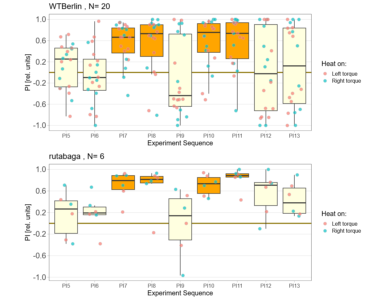
So far, I only could get one radish fly to make it through the experiment, so I cannot display it here.
Category: Operant learning, operant self-learning | No Comments
Bachelor Blog / #7 offspring
on Monday, October 2nd, 2023 10:51 | by Ellie
Below you can find the data I collected from the offspring flies:
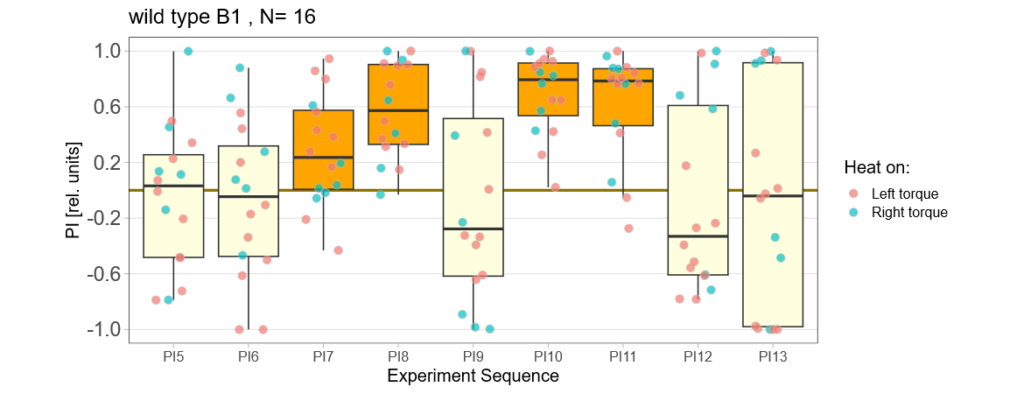
-> offspring from trained parents
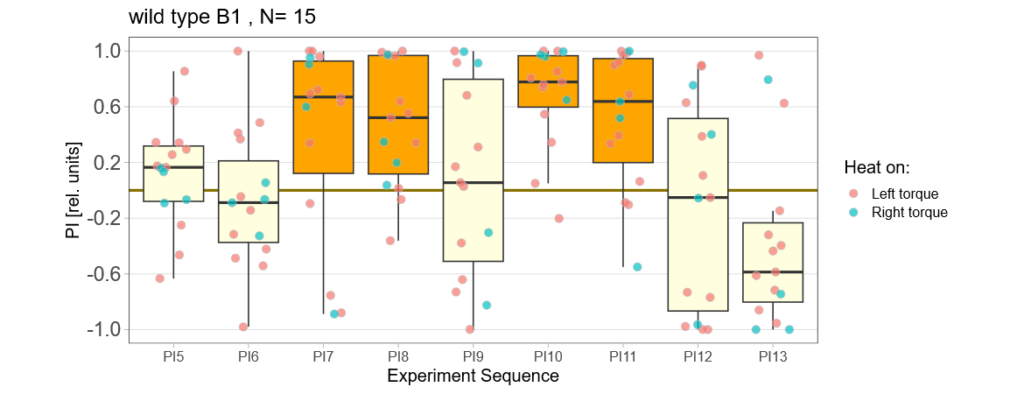
-> offspring from untrained parents
(I left out data from flies that showed negative preference during two training periods in a row)
Four minutes not enough
on Friday, September 29th, 2023 4:20 | by Björn Brembs
Eight minutes of yaw torque training work just fine for both wild type and mutant flies:
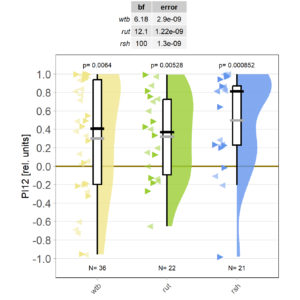
Reducing the training to four minutes is not enough for wild type flies:

Now it will be exciting to see if the mutants still do what they did many years ago: learn better than wild type.
Category: Operant learning, operant self-learning | No Comments
Results for MB+DANs and MB054B
on Monday, September 25th, 2023 11:07 | by Maja Achatz
The first experiment tested the activation of KCs with simultaneous ablation of pPAM which showed the following results:
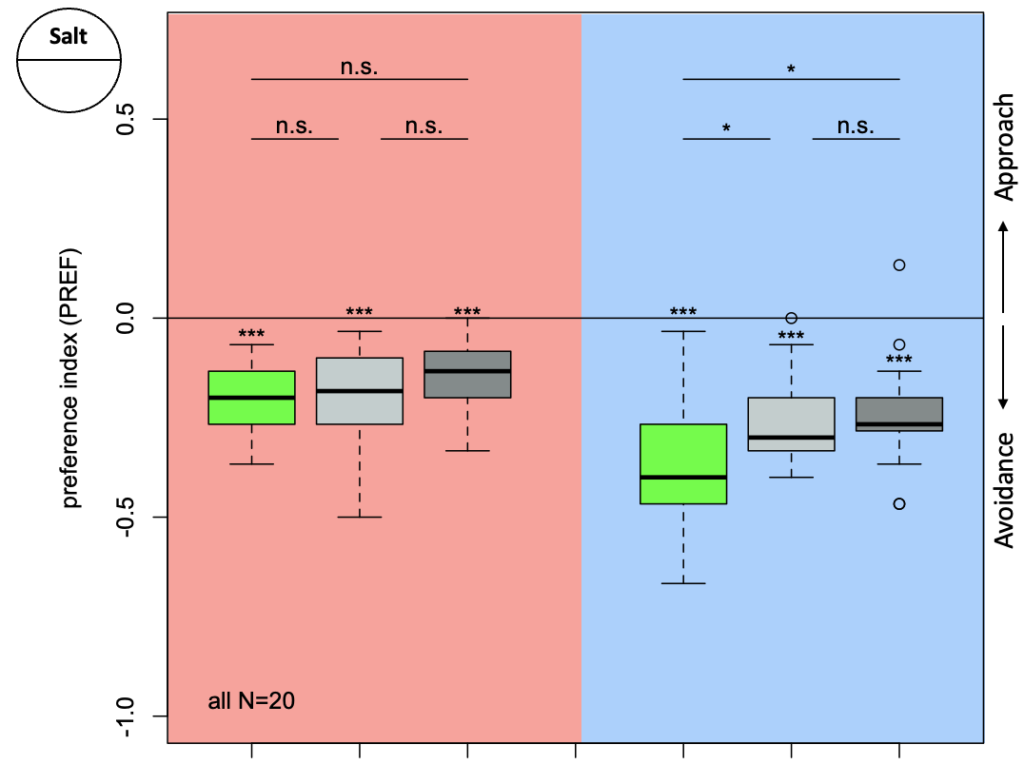
Green: UAS-ChR2-XXL; LexAop-rpr x 58E02-LexA; H24-Gal4
Lightgrey: UAS-ChR2-XXL; LexAop-rpr x H24-Gal4
Darkgrey: UAS-ChR2-XXL x 58E02-LexA; H24-Gal4
The next experiment was conducted with the split-Gal4 line MB054B (DAN-f1/DAN-g1) and showed the following:
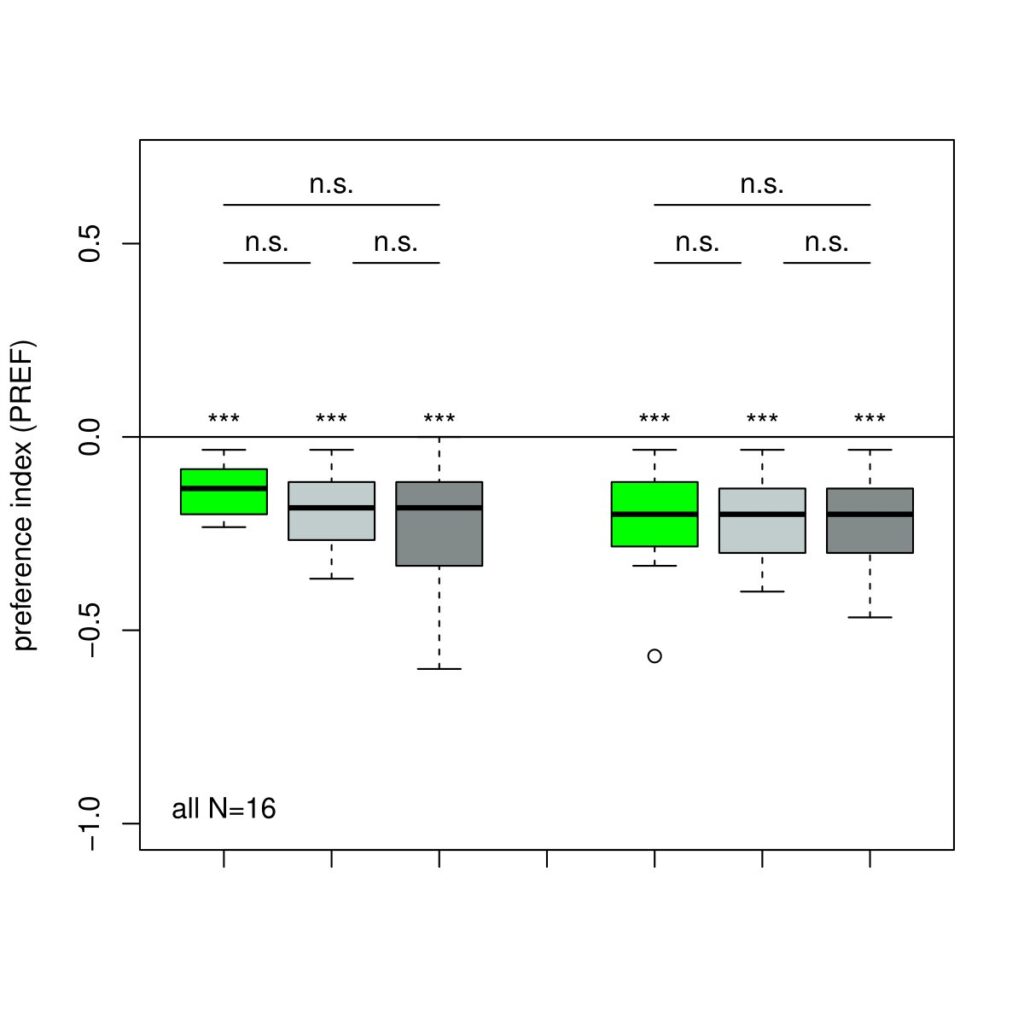
Category: Kenyon cells, Larve, Mushroom Body, Optogenetics | No Comments
Bachelor Blog / #6 playing around
on Monday, September 18th, 2023 12:51 | by Ellie
Since the results I got after training the parental flies looked a bit odd on first sight I decided to take a closer view…
First I excluded some weird animals that either showed a larger preference for one side than avoidance or showed no avoidance two training periods in a row:
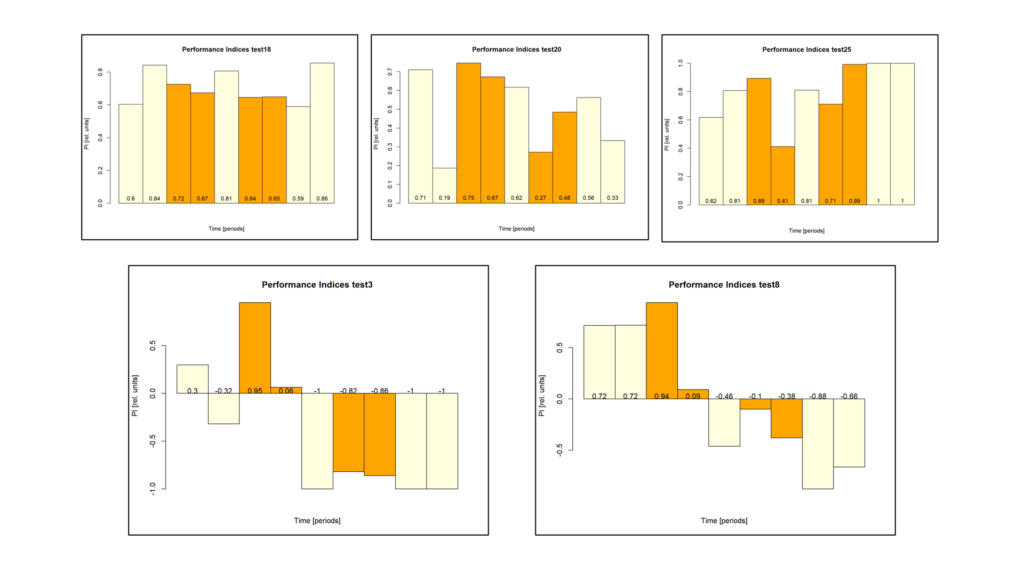
Next I compared the behavior of flies that showed avoidance but no learning with the behavior of the remaining flies:
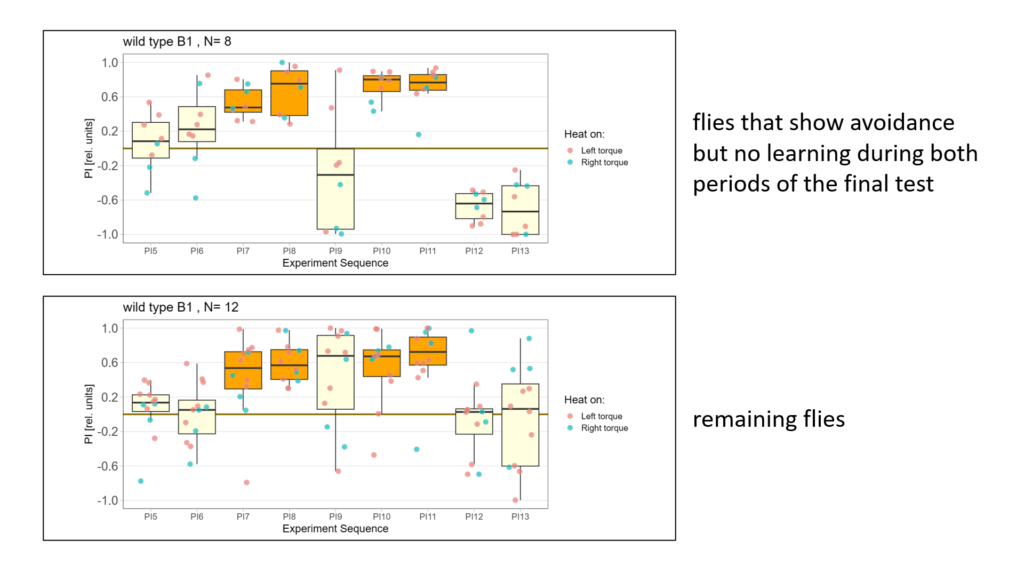
-> Avoidance is almost the same but note the first test period!
Lastly I split the data according to male and female flies. Here is what I got:
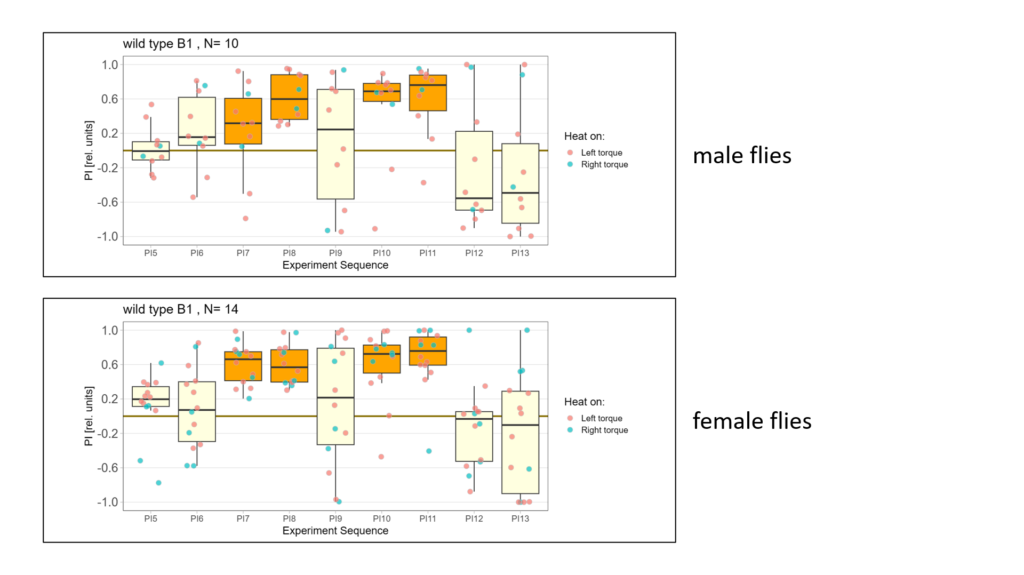
-> Looks a bit like there is negative learning in the male flies however I don´t have enough data to be sure…
As an overview here are all the flies (except for the excluded ones) together again:
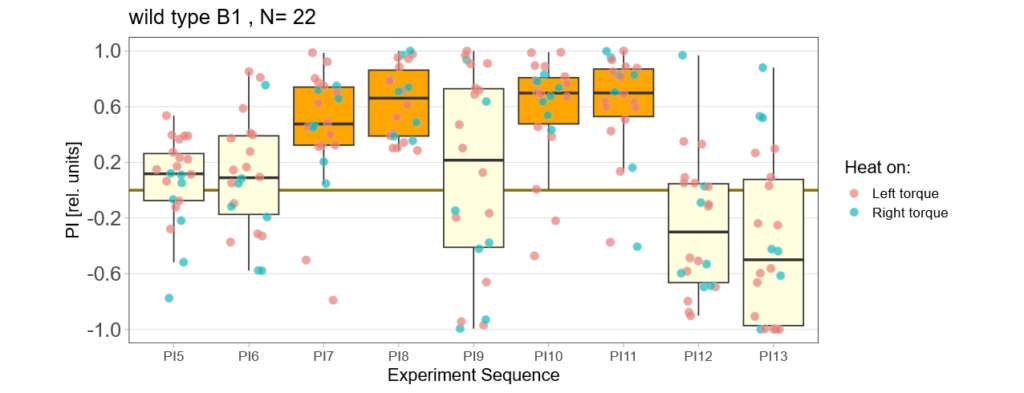
Bachelor Blog / #5 no learning :(
on Monday, September 11th, 2023 12:21 | by Ellie
Below you find the data from my experimental rounds A and B:
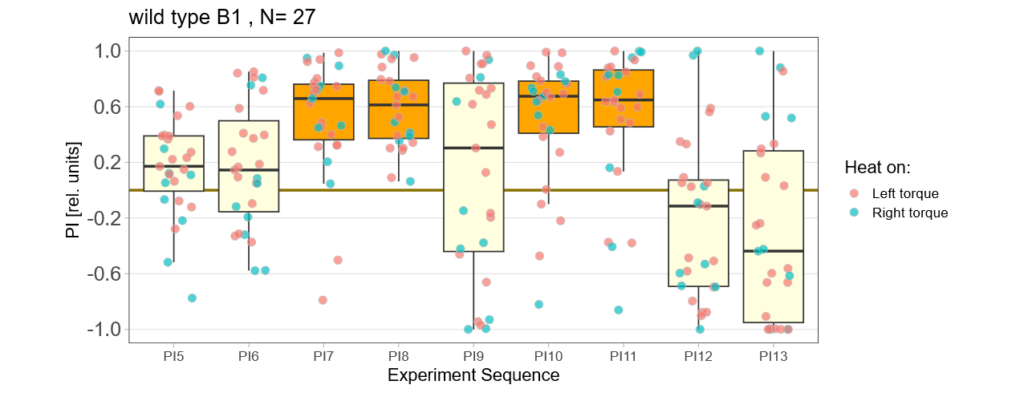
-> learning scores of the parental flies from experimental round A and B

-> learning scores of the trained parent´s offspring only from experimental round A
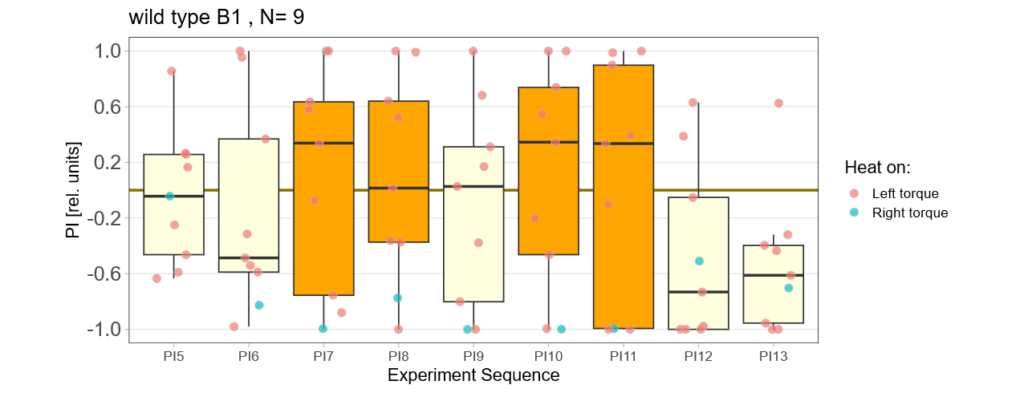
-> learning scores of the untrained parent´s offspring only from experimental round A
The results confuse me a lot and I am happy to discuss reasons :) However the offspring of the round-B will be ready for testing by the end of this week so there is still some data to collect…
Verification TH-C-AD;TH-D-DBD
on Monday, September 11th, 2023 9:52 | by Luisa Guyton
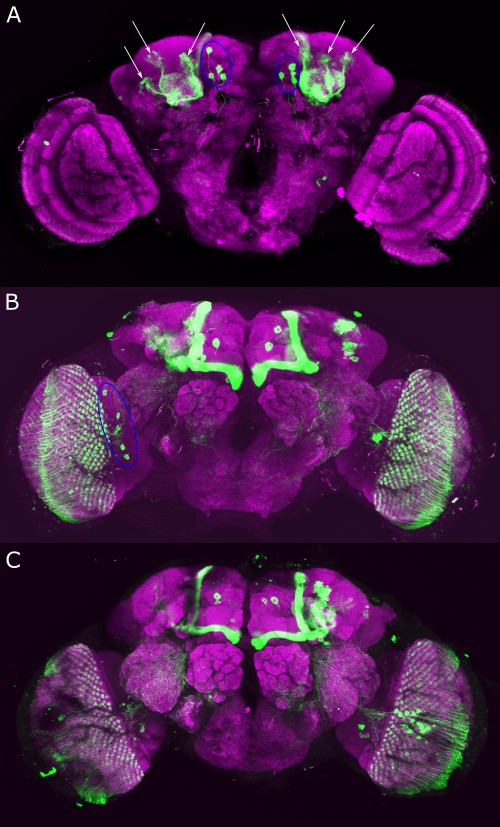
Category: Anatomy, DAN, genetics, Kenyon cells, Optogenetics | No Comments
Coded the regression analysis
on Thursday, September 7th, 2023 2:16 | by Björn Brembs
I now switched the sign of the Optomotor Asymmetry Index in flies that were punished on producing right-turning torque, such that weaker punished torque shows up as a positive index. After that was done, I plotted the correlation between the optomotor index and the preference index:

I had to get rid of eight flies where the optomotor response was already asymmetric before the training started, so now I only have 33 flies. But with these flies, there is no correlation before training and a very significant correlation after training.
Any suggestions about appearance of the graphs?
Would it be useful to plot optomotor and performance indices as raincloudplots next to the regressions?
This would be the complete figure:
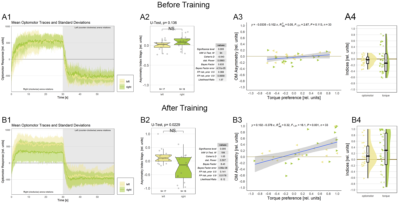
Category: operant self-learning, Optomotor response | No Comments
Optomotor project nearing completion
on Monday, September 4th, 2023 1:59 | by Björn Brembs
The results of comparing optomotor responses after self-learning remain solid. There still is a small asymmetry between the left/right groups, but nothing dramatic:
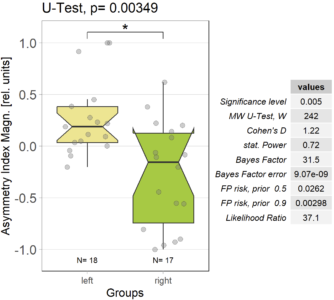
Category: operant self-learning, Optomotor response | No Comments
Optogenetic stimulation of DANs
on Saturday, September 2nd, 2023 11:09 | by Maja Achatz
With the focus on dopaminergic neurons, I conducted two experiments with two different driver lines to see how the naive gustatory behavior in Drosophila larvae is affected.
The first cross I tested was R58E02-Gal4 x UAS-ChR2-XXL, which gave me the following results:
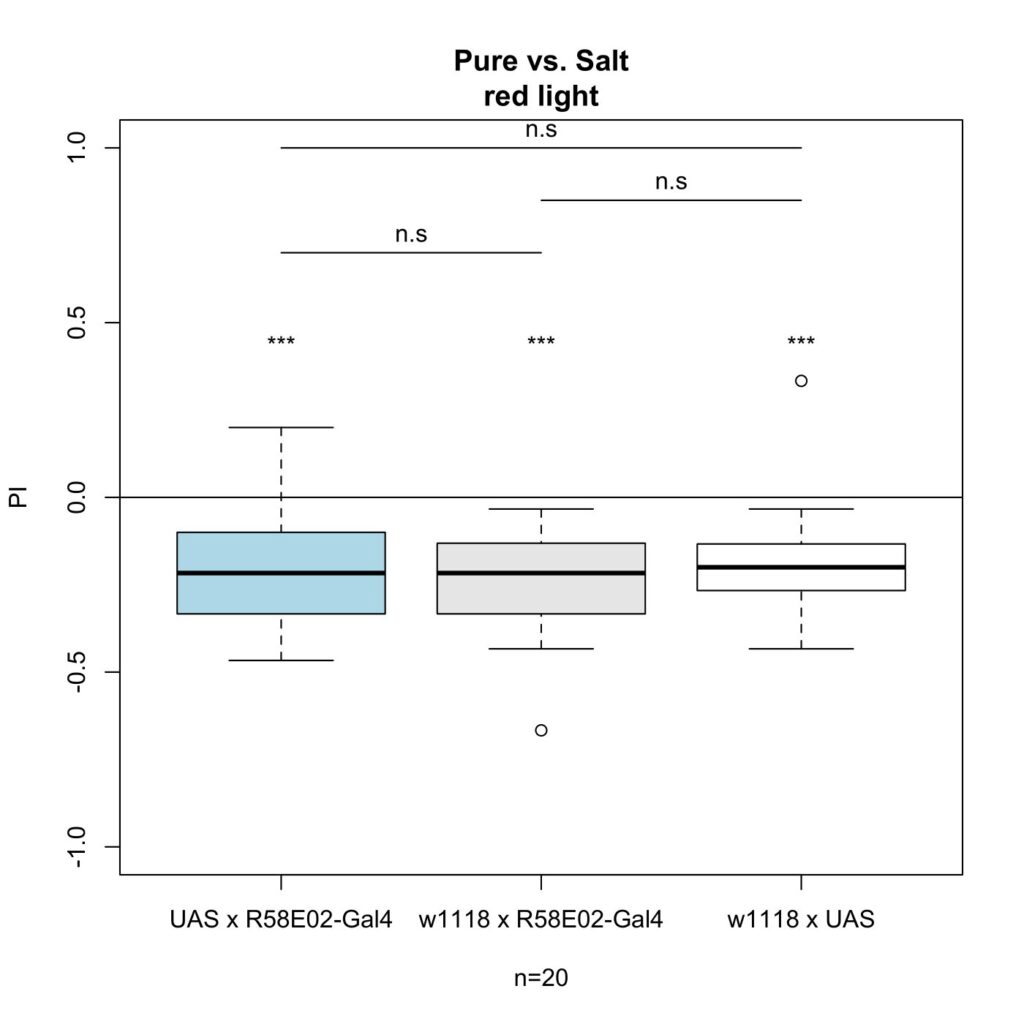
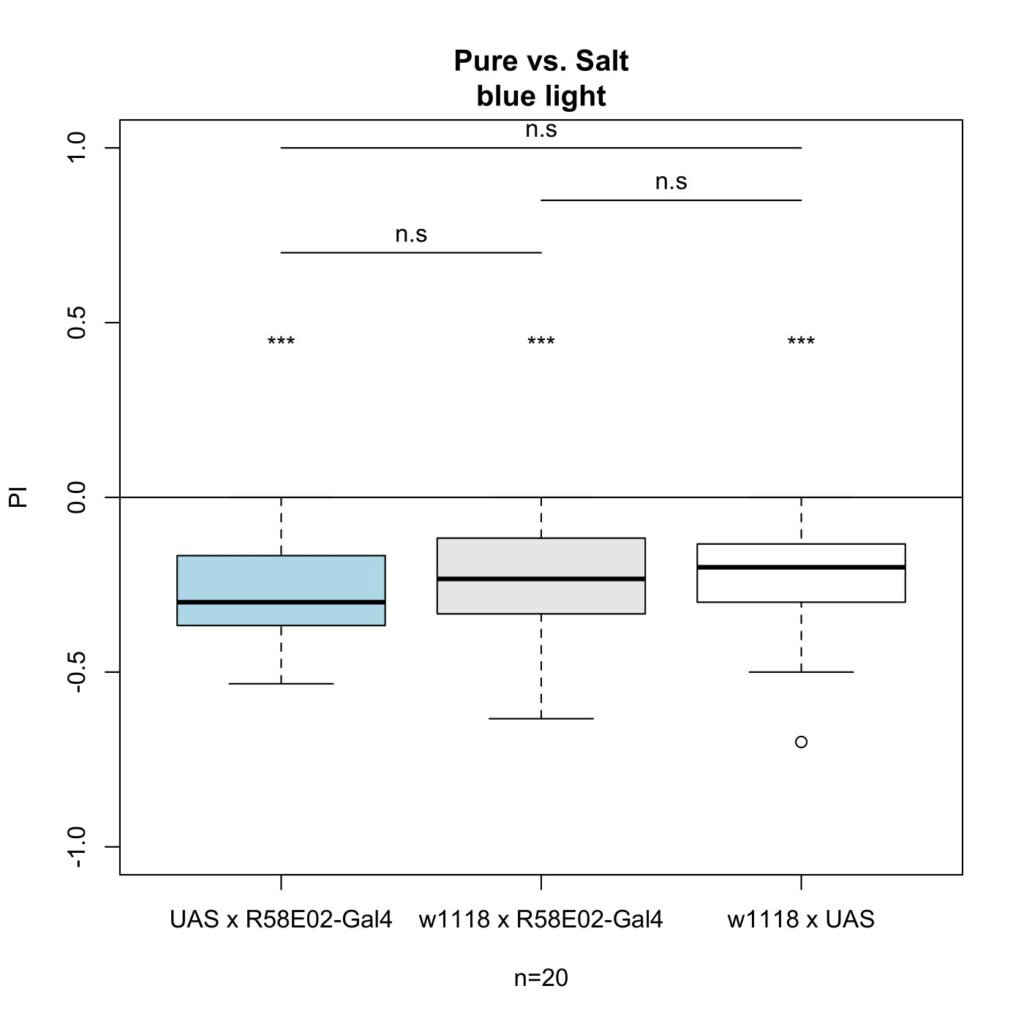
As seen in the figures, there was no effect under blue light.
For the second experiment I crossed TH-Gal4 x UAS-ChR2-XXL with these results:
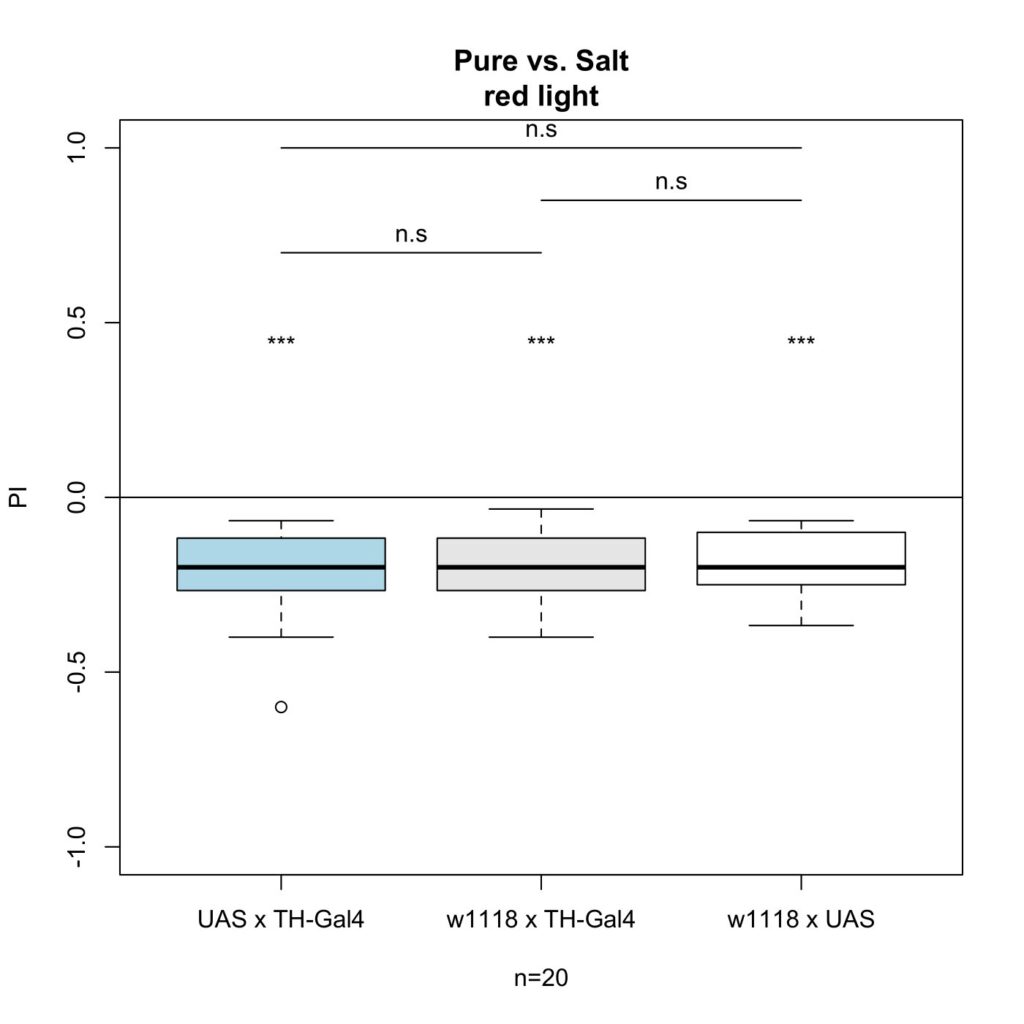

With this experiment, there was an effect on gustatory behavior as there is a clear significant difference between the experimental group and the control group.
Category: DAN, Larve, Optogenetics, PAM | No Comments
